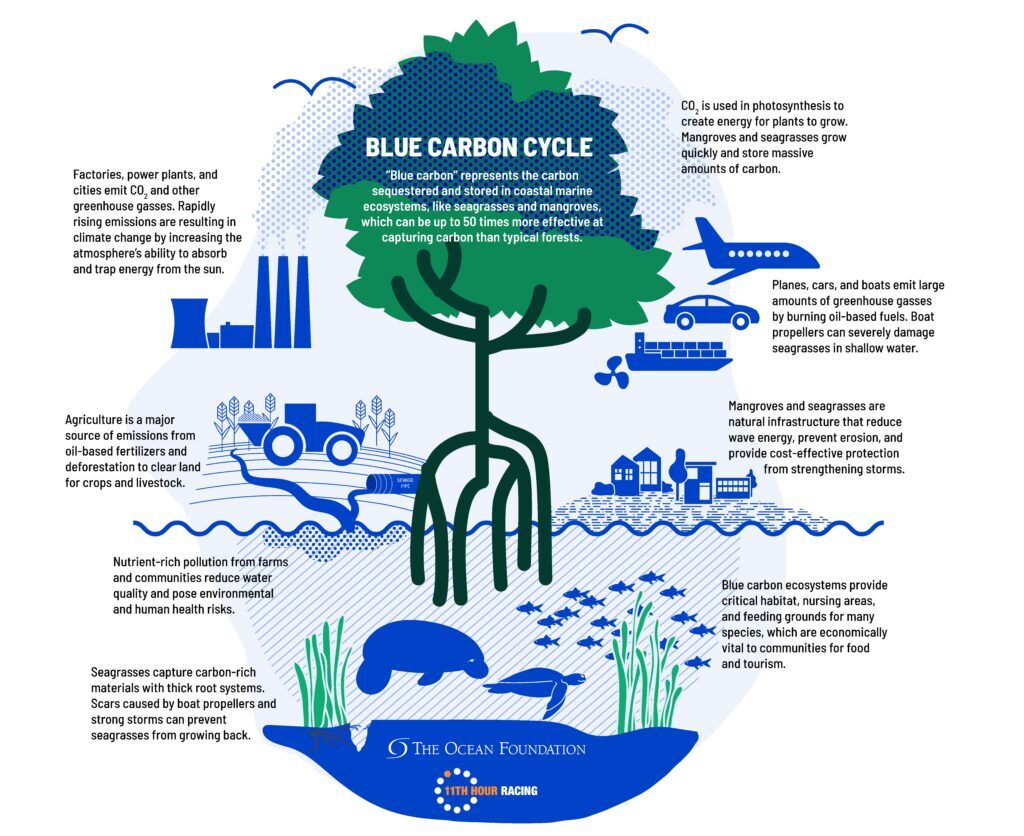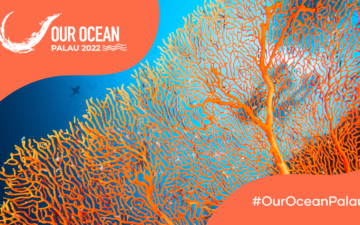Jessica Sarnowski is an established EHS thought leader who specializes in content marketing. Jessica crafts compelling stories intended to reach a broad audience of environmental professionals. She may be reached through LinkedIn at https://www.linkedin.com/in/jessicasarnowski/
Long before I moved with my parents to California and saw the power of the ocean with my own eyes, I lived in New York. My childhood bedroom had a blue rug and a giant globe in the corner of the room. When my cousin Julia came to visit, we plopped bedding on the floor, and that bedding became sea vessels. In turn, my rug was transformed into the vast, blue, and wild ocean.
My blue ocean rug was powerful and robust, full of hidden dangers. However, at the time, it never dawned on me that my pretend ocean was in danger from growing threats of climate change, plastic pollution, and decreasing biodiversity. Flash forward 30 years and we are in a new ocean reality. The ocean faces threats from pollution, unsustainable fishery practices, and climate change, resulting in a decrease in biodiversity as levels of carbon dioxide in the ocean increase.
In April of 2022, the 7th Our Ocean Conference took place in the Republic of Palau and resulted in a commitments paper that summarized the results of the international conference.
The six main topics/themes of the conference were:
- Climate Change: 89 commitments, worth 4.9B
- Sustainable Fisheries: 60 commitments, worth 668B
- Sustainable Blue Economies: 89 commitments, worth 5.7B
- Marine Protected Areas: 58 commitments, worth 1.3B
- Maritime Security: 42 commitments, worth 358M
- Marine Pollution: 71 commitments, worth 3.3B
As the commitments paper mentions on page 10, climate change is an inherent part of every theme, despite the fact that it is broken out individually. One can argue, however, that separating climate change out as a theme in itself is important toward recognizing the connection between the climate and the ocean.
Governments around the world made commitments to address climate change impacts to the ocean. For instance, Australia committed to provide 4.7M (USD) and 21.3M (USD) in support of the second phases of the Pacific Regional Blue Carbon Initiative and the Climate and Oceans support program, respectively. The European Union will provide 55.17M (EUR) toward marine environmental monitoring via its satellite-monitoring programme and data service, among other financial commitments.
Recognizing the value of mangroves, Indonesia committed 1M (USD) toward the rehabilitation of this valuable natural resource. Ireland committed 2.2M (EUR) to establish a new research programme focusing on blue carbon storage and sequestration, as part of its financial support. The United States provides an extensive amount of support to address climate change impacts on the ocean, such as 11M (USD) for the Estimating Circulation and Climate of the Ocean (ECCO) science team, 107.9M (USD) for NASA to create an instrument to observe coastal ecosystems, 582M (USD) for enhanced ocean modeling, observations, and services, among many other items.
Specifically, The Ocean Foundation (TOF) made six (6) of its own commitments, all in USD, including:
- raising 3M through the Climate Strong Islands Network (CSIN) for U.S. island communities,
- committing 350K toward ocean acidification monitoring for the Gulf of Guinea,
- committing 800K for ocean acidification monitoring and long term resilience in the pacific islands,
- raising 1.5M to address issues of systemic inequity in ocean science capacity,
- investing 8M toward the effort of blue resilience in the Wider Caribbean Region, and
- raising 1B to support corporate ocean engagement with Rockefeller Asset Management.
In addition, TOF facilitated the development of Palau’s first-ever carbon calculator, in conjunction with the conference.
These commitments are vital as a first step toward connecting the dots between climate change and ocean health. However, one may ask, “what is the underlying significance of these commitments?”
The Commitments Reinforce the Notion that Climate Change and the Ocean are Interconnected
Environmental systems are interconnected, and the ocean is no exception. When the climate warms, there is a direct effect on the ocean and a feedback mechanism that can be represented by the carbon cycle diagram below. Most people are aware that trees cleanse the air, but they might not know that coastal marine ecosystems can be up to 50 times more effective than forests in storing carbon. Thus, the ocean is an amazing resource, worth protecting, to help counterbalance climate change.

The Commitments Support the Concept that Climate Change is Hurting Biodiversity and Ocean Health
When carbon is absorbed into the ocean, there are chemical changes to the water that are inevitable. One result is that the pH of the ocean plummets, resulting in a higher acidity of the water. If you recall from high school chemistry [yes, it was a long time ago, but please think back to those days] the lower the pH, the more acidic, and the higher the pH, the more basic. One problem that aquatic life faces is that it can only exist happily within a standard pH range. Thus, the same carbon emissions causing disruption of the climate also affect the acidity of ocean water; and this change in water chemistry affects the animals that live in the ocean as well. See: https://ocean-acidification.org.
The Commitments Prioritize the Ocean as a Life Sustaining Natural Resource
It is not insignificant that this year’s conference took place in Palau – what TOF refers to as a Large Ocean State (rather than a Small Island Developing State). Communities that live with a front row view of the ocean are those who see the effect of climate change most rapidly and dramatically. These communities cannot ignore or postpone the effects of climate change. Although there are ways to mitigate the rising waters of climate change, these strategies do not address the longer-term problem of how climate change impacts the integrity of the ocean ecosystem. What the commitments signify is a realization of the effect that climate change will have on the ocean and thus on the human species at large, and the need to take forward-thinking action.
Thus, the commitments made at the Our Ocean Conference are practical next steps in prioritizing the importance of the ocean for our planet and the human species. These commitments recognize the ocean’s power, but also its vulnerability.
Thinking back to the blue ocean rug in my New York bedroom, I realize that it was hard at the time to connect what was “below” the ocean rug to what was happening to the climate “above” it. However, one cannot protect the ocean without understanding its importance to the planet as a whole. Indeed, the changes to our climate impact the ocean in ways that we are still discovering. The only way forward is to “make waves” – which, in the case of the Our Ocean Conference – means committing to a better future.






